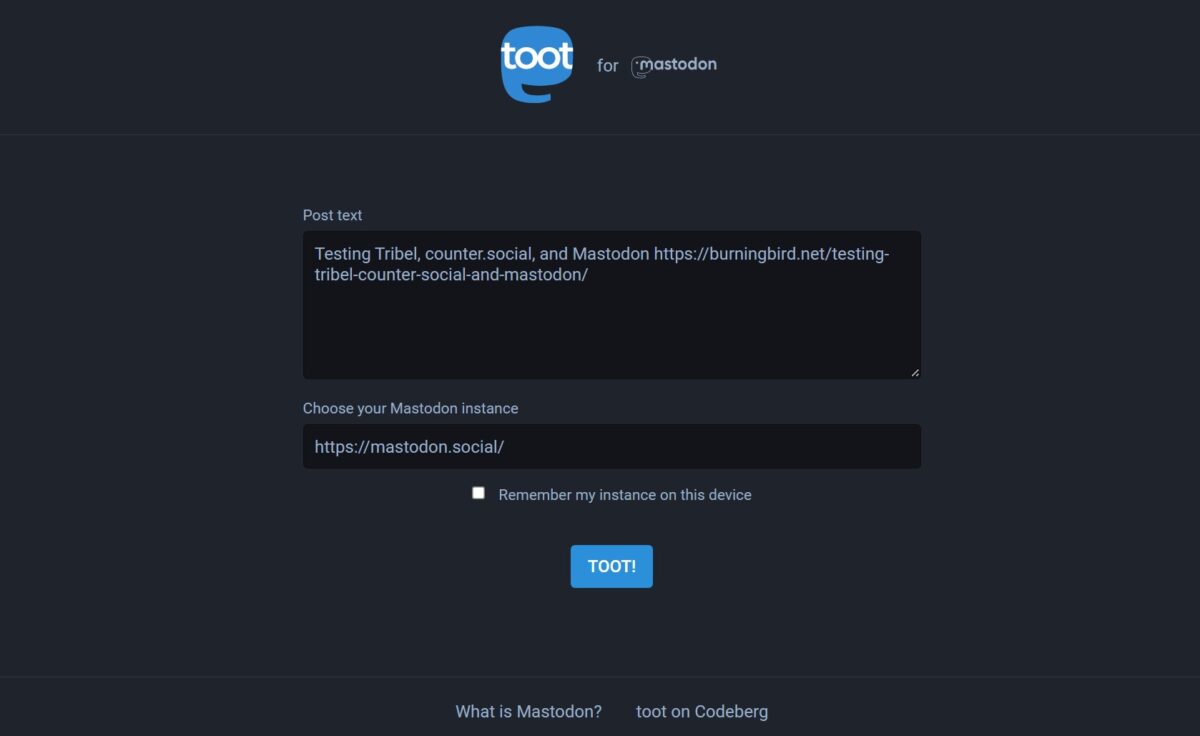I just installed the ActivityPub plug-in for WordPress. With it, you can follow posts here at Burningbird by following bosslady@burningbird.net. Supposedly, then, this post would show up on Mastodon as a new post. There’s also a plugin that would allow my WordPress weblog to subscribe to one or more folks on Mastodon, and publish their […]
Category: Social Media

Offered without comment. For more info.

The social media upheaval continues but things are starting to quiet down a bit. Oh you can’t tell this from the media, which is full of stories leading with “Elon Musk says…”, but that’s primarily because the media hasn’t figured out how to wean itself off Twitter, yet. I quit Twitter the day that Musk […]

Elon Musk’s Twitter antics are getting harder to ignore, so I’ve joined with others to look at social media competitors in hopes of finding that perfect Twitter alternative. Hint: there aren’t any. The Trouble with Tribel The first app I checked out is Tribel, a social media app created by Omar Rivero, also known as […]
Evil twin Twitter and the media

Musk took over Twitter, immediately fired most of the executive staff, and has seemingly lowered the restrictions on some of the more notorious Twitter offenders (of which sadly pathetic but proud killer Kyle Rittenhouse is one). Musk’s own tweets would seem to support our worst fears of his impact on the site. This screenshot of […]
